-
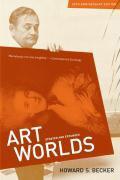
Art Worlds
This classic sociological examination of art as collective action explores the cooperative network of suppliers, performers, dealers, critics, and consumers who - along with the artist - "produce" a work of art. Howard S. Becker looks at the conventions essential to this operation and, prospectively, at the extent to which art is shaped by this collective activity. The book is thoroughly illustrated and updated with a new dialogue between Becker and eminent French sociologist Alain Pessin about the extended social system in which art is created, and with a new preface in which the author talks about his own process in creating this influential work. -
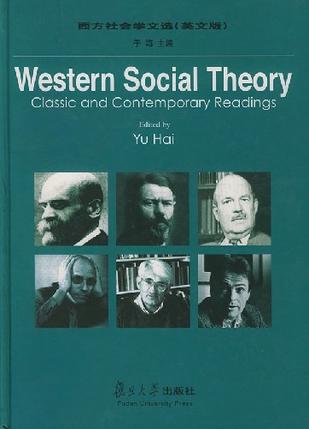
西方社会学文选
本书为20世纪西方社会理论文选。全书分经典与当代两大部分,当代理论再分为美国、德国、英国和法国等四个小部分,选入过去100年在西方产生过最重要影响的欧美社会理论家50多位,文献78篇。本书可作为社会学专业学生的专业英语教材,也可用作社会科学的基本原典文献。 Anthony Giddens曾这样区分“社会理论”和“社会学”,他将“社会理论”等同于各门社会科学所共同关注的论题领域,如行动与行动者的性质,互动与制度的关系等。而认为“社会学”只是社会科学的一门分支,只关注“发达的”或现代的社会。本文选以“Social Theory”为篇名,依据了Giddens的这一分别,透过诸如行动、自我、互动、符号、结构、知识、权力等具有分析性和实质性意义的范畴在本文选所占之篇幅,表明了编者确定的重点,这些内容也就是通常所谓“方法论”、“理论视角”或“理论范式”的问题。但这种分别不应是僵硬的和机械的。离开西方现代社会的真实进程和实质分析,社会理论就将失去与生活世界的真实联系,从而丧失解释力量。正如 Hegel所坚持的那样,方法是贯穿于过程始终的精神,而非游离在外的窍门。Durkheim、Weber、Wallerstein、Giddens、Foucault、Baudrillard等人的社会分析同样也是在对诸如“分工社会”、“官僚社会”、“现代世界体系”、“自反性现代性”、“规训社会”及“拟像社会”的阐述中展开的,也就是说,这些有关现代西方社会的实质理论本身具有方法论的意义。 本文选参考了西方学者(主要为美国学者)编的社会理论文选,它们是: Talcott Parsons等编的Theories of Society(The Free Press,1961);Randall Colllns编的Three Soc。ologlcalTraditions(Oxford University Press, 1985); Lewis A.Coser等编的 Sociological Theory (Macmillan Publishing Co,Inc,1982),以及 Charles Lemert编的 Social Theory(Westview Press,1999)。本文选充分借鉴了这些文本对经典理论的选择成果,事实上在经典篇目的确定和选择上西方社会学界已经形成高度共识,如Durkheim《宗教生活的基本形式》中的结论部分,Weber《经济与社会》的第一章“社会学的基本概念”,Mead《心灵、自我和社会》中“玩耍、游戏、普遍化他人”章节等,都是各选本必选篇目。在当代理论方面,各选家的重点已显分化,但仍然存有共识,如Parsons的单位行动与模式变项理论,Berger和Luckmann的知识社会学的现象学界定,Levi-Strauss的神话的结构分析,Foucault的真理与权力的谈话等。本文选也参考了上述编者的工作,在这些方面我们的工作是分享而非原创。但这是一本编给中国学生阅读的社会理论文选,因而在入选人物、篇目、文选结构等方面都有异于上述文本的考虑和安排。首先,本文选是按年代与国家安排篇章次序和不同部分的,以期展现社会理论的发展脉络和国别特点,而为中国学生提供把握理论脉络的直观时空框架。其次,本文选在国别分类中加入了学派分类,将入选人物依学派勾连起来,凸现理论传统的源流与分合,减少了人物众多无从入手的散漫性。这样的学派分际之于具体人物不可能圆满契合,削足适履亦恐难免,却也不妨为理论学习的方便导引,无论如何在对20世纪主要社会理论传统的认定上仍然存在着基本的共识。最后,本文选入选人物是以一个中国学者的眼光选择的,待入选人物的重要性很大程度上也是依据其在中国的影响力来判定的,并力求平衡地对待不同国家的入选人数,避免厚此薄彼,这对标以“西方社会理论”的文选来说是一必不可少的要求。正是鉴于在美国学者编选的文本中德国与法国的篇幅显得薄弱,本文选给予德法社会理论家更多的关注。我们选入不应遗漏的 Scheler、Luhmann和 Danrendorf(德国)及 Touraine、Crozier和Boudon(法国) ;增加 Habermas、Giddens和 Bourdieu的篇幅。事实上, Parsons以后,法国和德国较之美国更应被称为社会理论富有活力的中心。本文选并不忽视美国社会理论的贡献,战后Parsons代表的美国社会学成为主流理论,“整个世界的社会学都为美国社会学所主宰,社会理论里深深地刻下了Parsons的印记”(Giddens语),它所占的篇幅仍是最大的一块,但这不意味着Parsons仍然要占有最重的分量。今天我们应该有足够的眼光给予其他美国社会理论家更公正的关注,力求不遗漏当代重要而活跃的美国社会理论家(如 COllins)。 Comte通常被视为西方社会学鼻祖,这种说法的象征意义远大于其实质意义。Comte生活的时代诞生了现代意义的社会学,Comte自有贡献,但比起Marx的贡献来是微不足道的。19世纪社会学真正可称为经典的人物只有Marx一人。在Marx传统之外,所有重要的社会理论传统和主流学派都是在20世纪发展起来的。从这个意义上说,本文选不说包含了全部的“现代社会理论”,确也涵盖了它的大部。 本书入选文献,除已经过了版权保护年限成为公众共享的篇目外,我们都向作者或出版机构申请重印许可。我们已经得到下列作者的无偿授权:法国巴黎索邦大学 Raymond Boudon,法国国家研究中心 Alain Touraine和 Erhand Friedberg,英国伦敦经济学院 Anthony Giddens,美国耶鲁大学 Jeffrey Alexander,宾夕法尼亚大学 Randall Collins,加州大学伯克利分校 Nancy Chodorow等。在此谨向他们表示由衷的感谢。 中国优秀的大学都在倡导使用国外原版教材,编选本书算是一个积极的响应,在我也是一个新的尝试,期待海内外方家不吝赐教。 -
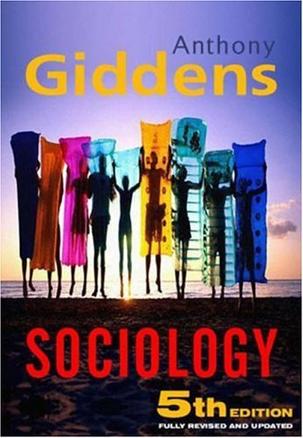
Sociology
This fully revised and updated version of Anthony Giddens's Sociology, now in its fifth edition, offers an unrivalled introduction for students new to the subject - lucid, lively, authoritative and original. Written by one of the world's leading sociologists, this comprehensive textbook manages to be clear, accessible and jargon-free, but without oversimplifying complex debates.Earlier editions of Sociology broke new ground by incorporating cutting-edge debates, such as the impact of globalisation, into an introductory text. This fifth edition remains a state of the art textbook, with fresh and engaging new material added throughout. While covering all of the core topics of sociology, the fifth edition also includes a great deal of substantive new material, ensuring that students are introduced to the most recent sociological debates. Throughout, the book weaves together classical and contemporary theory and data, and provides a wide range of everyday examples to which students can easily relate.The fifth edition also benefits from:¢ New discussions of global inequality, disability, ageing and the life course, risk, the network society, and terrorism, as well as many other additional and up-to-date topics.¢ Numerous learning aids in every chapter, such as summary points, questions for further thought, and additional reading suggestions, which help to reinforce students' knowledge.¢ Lots of extra photographs, diagrams, case studies and cartoons, to bring ideas to life and fire students' imaginations.¢ High-quality supplementary resources on a dedicated website, including a full instructors' manual and additional student aids, all specially designed to stimulate students' learning and critical thinking.The fifth edition of this classic textbook is an ideal teaching text for first-year university and college courses, and will be essential reading for all students who are looking for an exciting, authoritative and easy-to-follow introduction to sociology. -
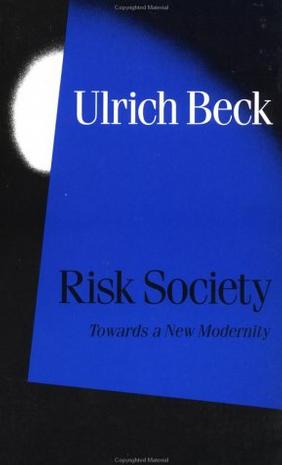
Risk Society
-
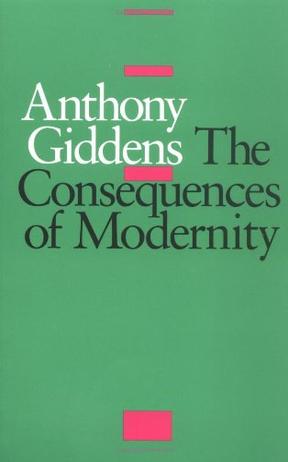
The Consequences of Modernity
In this major theoretical statement, the author offers a new and provoctive interpretation of institutional transformations associated with modernity. What is modernity? The author suggests, "As a first approximation, let us simply say the following: 'modernity' refers to modes of social life or organization which emerged in Europe from about the seventeenth century onwards and which subsequently became more or less worldwide in their influence." We do not as yet, the author argues, live in a post-modern world. The distinctive characteristics of our major social institutions in the closing years of the twentieth century suggest that, rather than entering into a period of post-modernity, we are moving into a period of "high modernity" in which the consequences of modernity are becoming more radicalized and universalized than before. A post-modern social universe may eventualy come into being, but this as yet lies on the other side of the forms of social and cultural organization that currently dominate world history. In developing a fresh characterization of the nature of modernity, the author concentrates on the themes of "security versus danger and o "trust versus risk. Modernity is a double-edged phenomenon. The development of modern social institutions has created vastly greater opportunities for human beings to enjoy a secure and rewarding existencethan in any type of pre-modern system. But modernity also has a somber side that has become very important in the present century, such as the frequently degrading nature of modern industrial work, the growth of totalitarianism, the threat of environmentsal destruction, and the alrming development of military power and weaponry. The book builds upon the author's pevious theoretical writings and will be of great interest to those who have followed his work through the years. However, this book covers issues the author has not previously analyzed and extends the scope of his work into areas of pressing practical concern. -
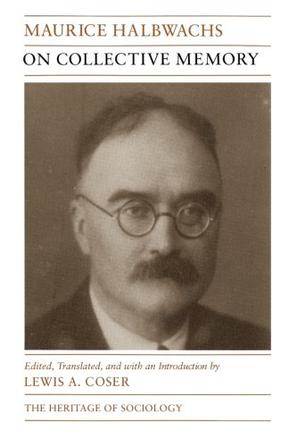
On Collective Memory
How do we use our mental images of the present to reconstruct our past? Maurice Halbwachs (1877-1945) addressed this question for the first time in his work on collective memory, which established him as a major figure in the history of sociology. This volume, the first comprehensive English- language translation of Halbwach's writings on the social construction of memory, fills a major gap in the literature on the sociology of knowledge. Halbwachs' primary thesis is that human memory can only function within a collective context. Collective memory, Halbwachs asserts, is always selective; various groups of people have different collective memories, which in turn give rise to different modes of behavior. Halbwachs shows, for example, how pilgrims to the Holy Land over the centuries evoked very different images of the events of Jesus' life; how wealthy old families in France have a memory of the past that diverges sharply from that of the nouveaux riches; and how working class constructions of reality differ from those of their middle-class counterparts. With a detailed introduction by Lewis A. Coser, this translation will be an indispensable source for new research in historical sociology and cultural memory. Lewis A. Coser is Distinguished Professor of Sociology Emeritus at the State University of New York and Adjunct Professor of Sociology at Boston College.